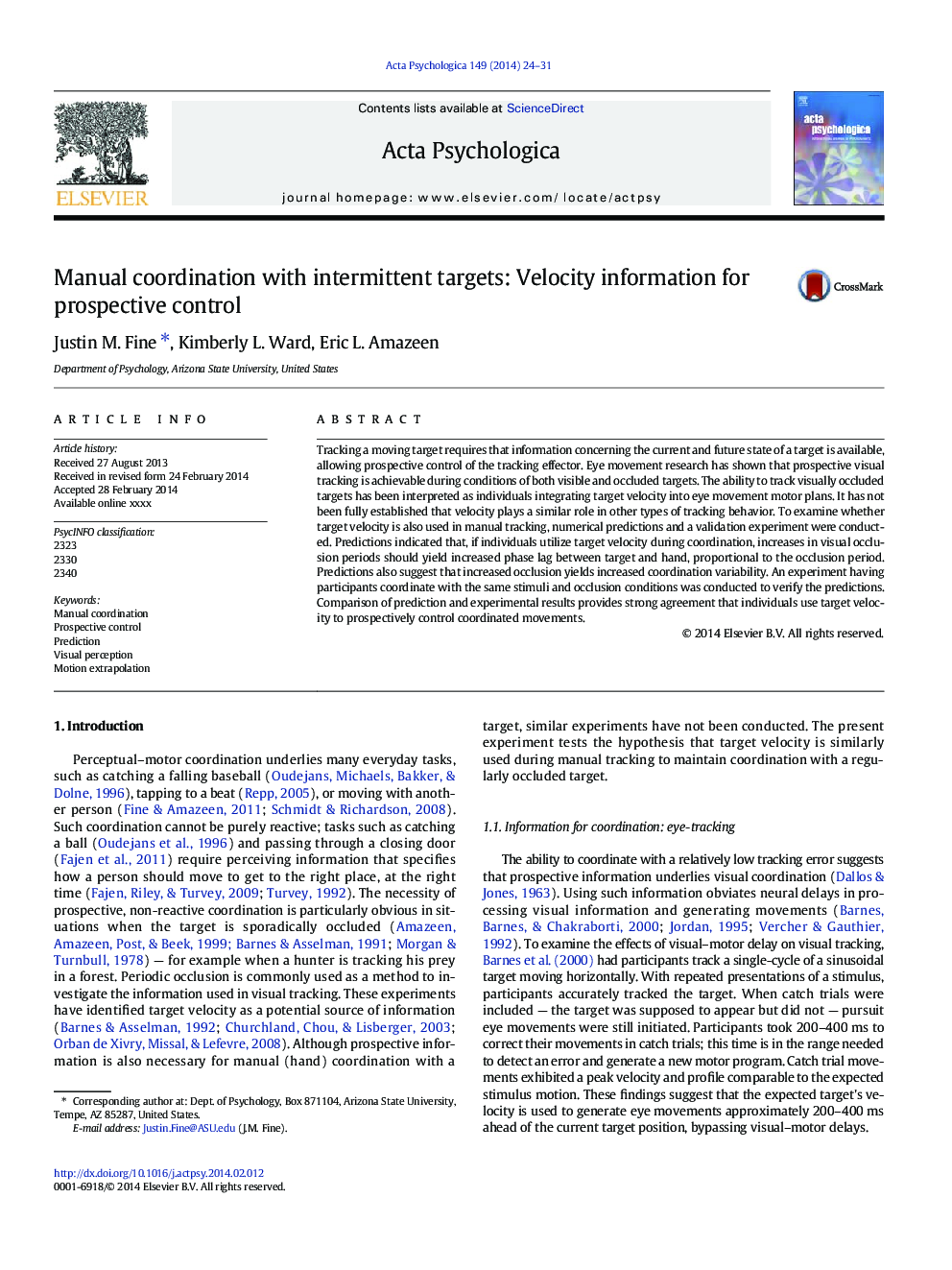| Article ID | Journal | Published Year | Pages | File Type |
|---|---|---|---|---|
| 7277639 | Acta Psychologica | 2014 | 8 Pages |
Abstract
Tracking a moving target requires that information concerning the current and future state of a target is available, allowing prospective control of the tracking effector. Eye movement research has shown that prospective visual tracking is achievable during conditions of both visible and occluded targets. The ability to track visually occluded targets has been interpreted as individuals integrating target velocity into eye movement motor plans. It has not been fully established that velocity plays a similar role in other types of tracking behavior. To examine whether target velocity is also used in manual tracking, numerical predictions and a validation experiment were conducted. Predictions indicated that, if individuals utilize target velocity during coordination, increases in visual occlusion periods should yield increased phase lag between target and hand, proportional to the occlusion period. Predictions also suggest that increased occlusion yields increased coordination variability. An experiment having participants coordinate with the same stimuli and occlusion conditions was conducted to verify the predictions. Comparison of prediction and experimental results provides strong agreement that individuals use target velocity to prospectively control coordinated movements.
Related Topics
Life Sciences
Neuroscience
Cognitive Neuroscience
Authors
Justin M. Fine, Kimberly L. Ward, Eric L. Amazeen,
